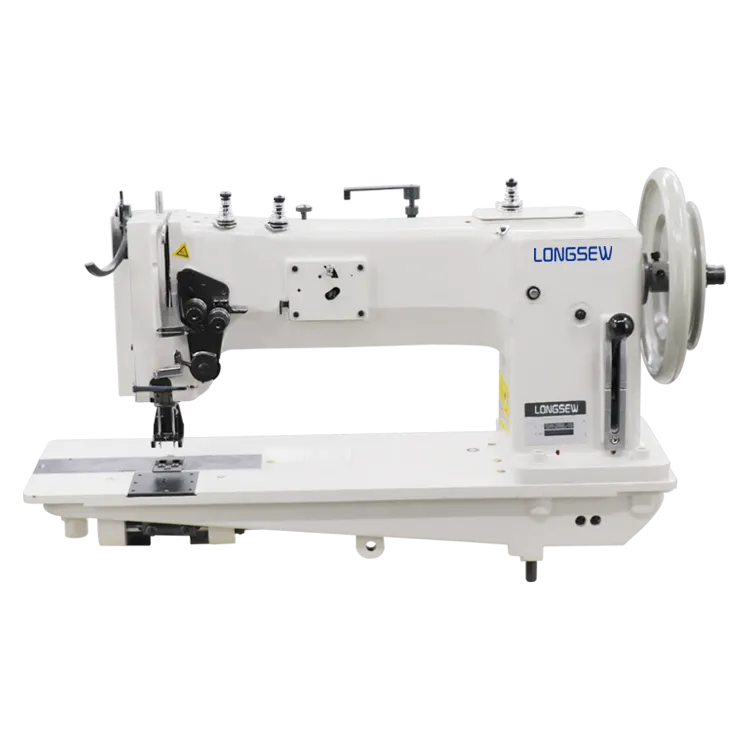Exploring the Features and Benefits of Overlock and Coverstitch Machines for Advanced Garment Construction
Understanding Overlock and Coverstitch Machines A Comprehensive Guide
When it comes to sewing, two machines stand out for their unique capabilities and the professional finish they bring to garments the overlock machine and the coverstitch machine. While both serve specific purposes in the sewing process, understanding their functions and how they complement each other is essential for any serious sewist or tailor.
What is an Overlock Machine?
An overlock machine, often referred to as a serger, is designed to sew seams and finish edges simultaneously. This machine uses multiple threads (usually 3 to 5) and specialized cutting blades that trim excess fabric while sewing, resulting in a clean and professional-looking edge. The primary purpose of an overlock machine is to prevent fabric from fraying, making it an invaluable tool for knit and woven fabrics alike.
One of the key features of overlock machines is their ability to create a variety of stitch types, including the well-known 4-thread overlock stitch, which provides both strength and elasticity, making it perfect for seams on stretch fabrics. Moreover, many overlock machines offer adjustable stitch width and length, allowing users to customize their sewing based on the project requirements.
What is a Coverstitch Machine?
In contrast, a coverstitch machine is primarily used for topstitching and hemming, especially on knit fabrics. It features a unique setup that allows for the creation of two rows of straight stitches on the top side (often referred to as coverstitch) while forming a serged seam on the underside. This makes it ideal for finishing the hems of t-shirts, leggings, and activewear since the coverstitch provides both durability and elasticity.
overlock and coverstitch machine

Coverstitch machines typically use two needles and one looper thread. Unlike an overlock machine, they do not trim or cut fabric, which means that they are best utilized after the pieces have been sewn together. The resulting finish mimics the professional quality of store-bought garments, giving home-sewn clothing a polished appearance.
Why Use Both Machines?
While each machine serves a distinct purpose, using both an overlock and a coverstitch machine can greatly enhance the quality of your sewing projects. An overlock machine efficiently finishes the raw edges of fabric pieces and constructs seams, while a coverstitch machine provides the finishing touches. This combination is particularly advantageous for those working with knit fabrics, as it ensures that seams are not only strong and finished but also flexible.
For instance, when sewing a knit dress, the overlock machine can be used to stitch the side seams, securing the fabric layers while preventing fraying. Following this, the coverstitch machine can be employed to finish the armholes and hem, yielding a clean, professional finish that can withstand wear and tear.
Conclusion
In modern garment construction, an overlock and coverstitch machine duo can transform your sewing experience. Although they have distinct functions, together they elevate home sewing to a professional level, allowing for beautiful, wearable creations. Whether you're a seasoned sewist or a beginner exploring the world of sewing, investing in both machines can expand your capabilities and enhance your projects' overall quality. With the right techniques and tools, you can create stunning garments that rival those found in retail stores.
-
Industrial Cylinder Arm Sewing Machine: Revolutionizing Heavy-Duty SewingNewsJul.28,2025
-
Cylinder Arm Sewing Machine: Perfect for Special Sewing ApplicationsNewsJul.28,2025
-
Cylinder Bed Sewing Machine: Essential for Sewing Complex MaterialsNewsJul.28,2025
-
Heavy Duty Sewing Machine: The Essential Tool for Industrial ApplicationsNewsJul.28,2025
-
Computerized Pattern Sewing Machine: Revolutionizing Precision StitchingNewsJul.28,2025
-
Heavy Duty Industrial Sewing Machine: Power Meets PrecisionNewsJul.28,2025
-
Leather Sewing Machine: The Industrial Standard for Tough MaterialsNewsJul.18,2025





























